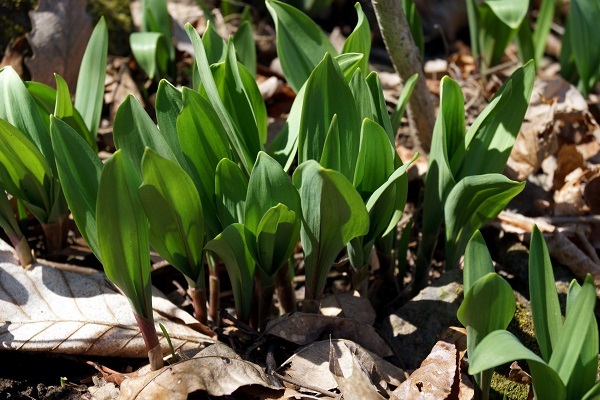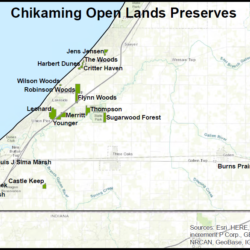
Ramp-ing up for Spring!
Posted on April 17, 2020
Ramps, or wild leeks, are often the very first hints of green you'll see popping up on the forest floor in the spring. They grow in clusters, and the leaves resemble that of lily of the valley, with reddish stems. You'll find them in wooded areas with well-drained soil, and they particularly like to grow on north-facing slopes. Ramps will grow from the first thaw of the spring until the tree canopy leafs out. When the ramp's leaves begin to yellow, the season is nearing its end.
Yes, they are edible... and yes, they are wonderfully delicious. However, before we continue: PLEASE do not forage for ramps (or anything else) in designated natural areas, including Chikaming Open Lands Preserves. It is never okay to remove any plants from these areas, unless you are doing so with the permission and under the supervision of the entity that owns and manages the area.
Ok, now that THAT'S out of the way...
Ramps are members of the onion family, and they have a delightful flavor that's a mix of mild onion and garlic. Like scallions, both the bulbs and greens can be used in cooking.
Ramps propagate in two ways:
1. Female plants develop a pink flower at the end of the season that disburses seeds
2. Bulb division underground (this is why they are often found clustered together)
Unfortunately, the (well-deserved!) popularity of ramps means they are in danger of being over-harvested. If you are going to forage on your own property or elsewhere with permission, it's very important to do so sustainably. Because of their very short growing season and the way ramps propagate, if you take an entire cluster, roots and all, it will take a very long time for them to regenerate (if they are able to at all). So, please be sure to take only one or two bulbs from a cluster, leaving the rest to divide and regrow the following year. Better yet, take a very sharp knife, and cut the ramp about halfway down the bulb at an angle, leaving a part of the bulb and roots in the soil (be sure your knife is very sharp though... if it's not, you'll do too much damage to the bulb for it to grow back next year).
Here's a great video showing how to cut ramps responsibly.
*Again, NOT on COL properties, or on any property without the owner's permission.
Fun fact: ramps are what gives Chicago its name! The Native Americans that originally lived in what is now the Chicago region called ramps chicagoua.




















